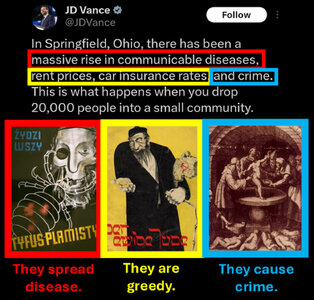- Messages
- 5,193
I think that a sorting of the country by geography, specialized interests, and media consumption has certainly been a key to the rise of MAGA as it has increasingly placed people in echo chambers where they largely only hear from those who are like them.You’re not going to find one factor that led to the rise of MAGA, but I don’t think we get to where we are today without the social isolation we experience as a country that was only exacerbated by Covid.
But I don't think that's the same as social isolation. It seems to me that it's not isolation that's the issue but that many folks no longer interact with a broad cross-section of people and instead only interact with people who are largely like themselves.
That's not to say that we don't have an issue with social isolation for a significant group of Americans. We likely do, but I don't see how it's a driver of MAGA beliefs.


